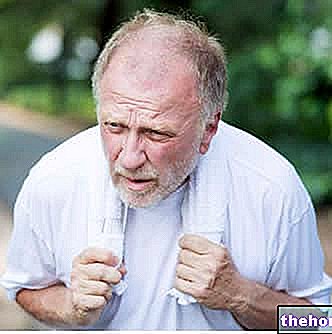The possible reasons behind the phenomenon are numerous.
One of the most recent hypotheses calls into question the so-called exorphins, opioid peptides - such as the so-called gliadorfina or gluteomorphin - which are formed during the digestion of gluten.These peptides, analogous to the now famous endorphins, if absorbed as they are, would be able to bind to the opioid receptors of the brain, disturbing their activity. of these peptides could disrupt brain activity, to the point of having a role in the onset of autism in children. However, this is a rather recent "hypothesis and without significant scientific confirmation.
Much more advanced is the hypothesis according to which the gastrointestinal congestion, linked to the digestive commitment, would cause the sense of tiredness and drowsiness after a meal rich in carbohydrates. Basically, to digest a particularly abundant meal, the digestive organs require large quantities of oxygen, obtained by reducing the flow of blood to other districts in favor of the digestive one. Fatigue and sleepiness would therefore be a consequence of the reduced blood supply to the brain. However, even this hypothesis appears rather remote, as the flow of blood and oxygen to the brain is strictly regulated and does not decrease significantly after meals.
Another rather common hypothesis concerns the state of reactive hypoglycemia resulting from massive insulin secretion. After a meal rich in carbohydrates, it happens that large quantities of glucose quickly pour into the bloodstream, causing a large increase in blood sugar; the pancreas responds to this condition by releasing large quantities of insulin into the bloodstream.
Insulin works by promoting the entry of glucose from the blood into the cells; consequently, when too much is secreted, the glucose in the blood is excessively lowered and the typical symptoms of hypoglycemia arise, including drowsiness.
Insulin also favors the entry of potassium into the cells, so an excess of the hormone could create a state of slight hypokalaemia (reduced concentration of potassium in the blood), responsible for muscle fatigue and weakness.
The hypothesis according to which the large quantities of carbohydrates introduced with the diet would favor the increase in the relative concentration of tryptophan in the blood, thanks to the stimulation of the entry of BCAAs into the muscles, is also reiterated. BCAA, the entry of tryptophan into the brain would be favored. Once in the brain, this amino acid is used for the synthesis of serotonin and melatonin, both of which promote sleep.
Tiredness and drowsiness after large meals could also depend on the reduced tone of the sympathetic nervous system in favor of the parasympathetic; while the first is massively active in conditions of fasting, fear and danger, the second prevails in conditions of well-being (digestion, quiet, physical recovery and rest) and therefore promotes relaxation and falling asleep.
, aimed at maintaining a relatively constant internal temperature. The human body is in fact able to tolerate a lowering of the deep temperature of 10 ° C, but hardly bears increases of more than 5 ° C.IMPORTANCE OF SKIN VASODILATION
Among the defenses used to avoid heat damage to internal organs, peripheral vasodilation plays an important role, because it helps to maximize heat dissipation. Therefore, in particularly hot climates, the vessels of the skin dilate to transport greater quantities of heat to the skin surface. In fact, blood can be considered a heat transport liquid; we speak, in particular, of circulatory convection to indicate that phenomenon by which the heat destined to be dispersed is transported from the production site (internal organs) to the body surface by means of the blood circulation.
Once in the skin, the heat is dispersed by conduction, convection and radiation (as well as by evaporation of sweat). Therefore, if more blood reaches the skin, a greater amount of heat is transported to it (and consequently dispersed).
The blood that has released heat in the skin capillaries cools the body by mixing with the blood coming from the warmer internal organs. Therefore, peripheral vasodilation facilitates heat loss and with it the cooling of the body.
HOT AND LOW PRESSURE
Peripheral vasodilation in hot environments brings with it some disadvantages, related to the drop in blood pressure. If the capillary surface increases, in fact, the blood pressure is reduced and this can cause some problems, especially for those who already complain of lower than normal blood pressure levels or suffer from cardiovascular problems. This is because in such circumstances the blood supply to the brain decreases, so the subject can feel fatigued, drowsy and lacking in energy, to the point of feeling a sense of faintness.
These sensations can be aggravated by dehydration. The significant loss of body fluids with sweating, in fact, reduces blood volume and this further contributes to lowering blood pressure, accentuating problems of tiredness, drowsiness and dizziness.
If the heating of the organism is particularly rapid and violent, the sudden peripheral vasodilation can lead to a pressure drop so rapid and important as to generate a state of shock. When, on the other hand, the exposure to heat is prolonged, the drop in blood pressure is the marked vasodilation, with edema (swelling) of the peripheral areas, can lead to fainting (because it reduces cardiac output).
At the first symptoms of fainting - such as dizziness, cold sweat, blurred vision or dry mouth - it is advisable to make the subject assume a lying position with the legs raised above the torso.
. During this "suspension", the processes of vegetative life remain active: we continue to breathe, the heart does not stop beating, the blood circulation does not stop and the production of hormones does not stop. Perception is also not absent, as a person may be awakened by a sound or tactile stimulus and occasionally muscle activity may occur (for example, when changing position in bed).
Many theories have been advanced to explain the physiological role of sleep. Some researchers believe that the function of sleep is mainly of refreshment to allow the body to recover the energy expended in daytime activities. Other experimental evidence has shown that night rest can facilitate the storage of useful information acquired during wakefulness and helps to consolidate the experiences lived. Recent data, moreover, demonstrate the implication of sleep in the immune defense mechanisms: some animals, deprived of rest for a long period, in fact, proved to be more easily susceptible to infection.
(EEG). Using this technique, the researchers identified two distinct stages of sleep, each characterized by specific physiological changes: slow-wave sleep and REM sleep.Rapid Eye Movement').Slow Wave Sleep or Non-REM Sleep (NREM)
Non-REM sleep constitutes about 75-80% of the total rest time in adults; consists of 4 stages characterized by an increase in the depth of sleep.
During slow-wave sleep, the brain emits low-frequency electrical waves (in wakefulness, brain waves are fast and erratic). Muscle tone has decreased, but involuntary motor activities occur occasionally (when, for example, changing position in bed). Pressure, temperature and heart rate also decrease.
During slow wave sleep a person may think and dream, but thoughts are more logical and with less emotional content than those that occur during REM sleep. Dreams are poorly detailed and often include feelings and vague images.
REM sleep
REM sleep follows each NREM sleep cycle (note: sleep stages do not occur once a night, but alternate multiple times for a total of 5-6 full cycles lasting 90-100 minutes). This stage is characterized by high-frequency electroencephalographic waves and episodes of rapid eye movements below the closed eyelids. The postural muscles lose tone, however the muscles that control the face, eyes and distal leg frequently become phasic.
REM sleep is approximately 20% of the total rest time. Compared to slow wave sleep, in this period there is an increase in brain activity except in the limbic system, where, on the contrary, neuronal activity decreases. It is at this stage that dream activity occurs: dreams are more elaborate and intense and are generally very articulate. In REM sleep, thoughts are more illogical and bizarre than in slow wave sleep.
they are heavy eyelids, burning eyes, frequent yawning, the sensation of cold, difficulty in focusing, the perception of muffled sounds, the inability to remember the last things done and the state of lost thought.
Preventing falling asleep is possible by respecting one's internal biological clock. Each of us has personal needs for sleep and wakefulness, which we must learn to know and satisfy, in order not to have sleep "debts" to be paid later. In fact, there are those who need to sleep longer and those who rest in a few hours, those who feel better if they sleep long in the morning and those who get up early.
The stroke of sleep is an insidious phenomenon, which can lead to dangerous situations. Before starting an activity that requires concentration, such as driving, it is useful not to eat abundantly and absolutely avoid alcohol and psychotropic substances. rest for at least 20-30 minutes before resuming the journey. It is also useful to check with your doctor if the medicines you are possibly taking can make you drowsy (such as sedatives, painkillers, tranquilizers, etc.).
driving) claims up to 800 victims a year in Italy; obviously, the number of injured and (fortunately) unharmed persons involved in such events increases dramatically.The importance of this complication for motorists is of such importance that, from 2006 to 2013, "Autostrade per l" Italia s.p.a. " offered free coffee at night in Autogrill, to be precise from 00:00 to 05:00. The intervention was aimed at reducing road accidents which, for 40%, occur between 11 pm and 6 am. The thirteen million coffees distributed at the times mentioned have served to increase the levels of caffeine in the blood, useful to increase reflexes and concentration (hopefully ...).
In this regard, Joris Verster and colleagues from the University of Utrecht carried out an experiment associating the hiring of Red Bull with driving. It was concluded that the "Energy Drink" reduces drowsiness and improves the driver's driving performance during extended motorway journeys.
A valid alternative to coffees that, since 2013, are no longer free at night as much as during the day! - unfortunately very common and still incurable form of dementia - can be prevented in various ways.
Proper night sleep is one of them.
In fact, it has been shown that sleeping regularly and the right number of hours per night improves cognitive abilities and protects from a rapid deterioration of the brain nerve cells; while resting a few hours a day or intermittently affects the ability to think, of problem-solving, acquisition of new information and memory.
Reminding readers that the hours of night sleep should be 7-8, let's see together what are the aspects of daily rest to which to pay maximum attention:
- Have regular sleep. This means not only sleeping the right amount of hours, but also always going to bed at the same time. The brain needs some nighttime regularity to stay healthy. The confirmation of what has just been said comes from those who usually go to bed early: the day after having done the "small hours" they feel dazed and groggy, even if they have slept enough.
- Don't overdo the so-called afternoon nap. Many elderly people have the habit of resting in the afternoon to regain strength. This rest, however, should not exceed 30 minutes, as otherwise it will be affected by night sleep.
- Do not have a television and / or computer in the bedroom. This room is to be reserved exclusively for night sleep and married life. Any distractions could reduce the number of hours you sleep per night and undermine your sleep routine.
- Find a "relaxing activity that" makes you fall asleep. "This is a kind of ritual that facilitates falling asleep. For example, someone finds it effective to write a few lines in their personal diary, read a few pages of a book or the newspaper of the day, take a hot bath, etc.
- If you are unable to sleep, get out of bed and engage in other activities for 20-30 minutes. It may happen that stress and anxiety do not make you fall asleep easily; in such situations it is advisable not to roll over in bed, but to get distracted with something else and in another room in the house.
These anomalous "sleep attacks" also occur in very active moments of the day: it can happen, in fact, that the narcoleptic falls asleep in the middle of a meal, during work or during a conversation.
Also, those suffering from narcolepsy
- He experiences persistent fatigue, which he cannot easily get rid of;
- Loses control of their muscles, especially after strong emotions (cataplexy);
- Suffers from sleep paralysis and nocturnal sleep disturbances. The latter, according to several studies, are due to a "wrong alternation between the REM and the NON-REM phase of sleep
- Report hallucinations
The precise causes of narcolepsy are still unclear.
According to some researchers, a brain peptide (N.B: a peptide is a very small protein), called orexin or hypocretin, plays a leading role.
Orexin is a neurotransmitter that regulates the orderly sequence of REM and NON-REM sleep phases.
In narcoleptic people, it seems that the amount of hypocretin is lower than normal, which causes a disruption of the aforementioned sleep phases.
The first researcher to coin the term narcolepsy was a French physician named Jean-Baptiste Edouard Gélineau, in 1880. Gélineau described the effects of the disease on a wine merchant who experienced drowsiness and constant "sleep attacks".
It should be noted, however, that the set of disorders, later indicated by the term narcolepsy, had already been outlined, between 1877 and 1878, by two German doctors named Westphal and Fisher.
Moving on to the twentieth century, precisely between the "20s and the 30s", the researchers who described in depth the characteristics of narcolepsy and the anomalous behavior of narcoleptics were different (Adie, Wilson and Daniels).
It was during this same period that the term "sleep paralysis" was coined to identify the inability to move of a narcoleptic upon awakening.
In 1957, the link between narcolepsy and the presence of: daytime sleepiness, cataplexy, sleep paralysis and hallucinations was definitively established.
Three years later, in 1960, Vogel - an expert on sleep disorders - identified for the first time, in narcoleptic subjects, the "existence of" an alteration between the REM and NON-REM phases.
Vogel's findings were confirmed by a certain Kleitman.
From 1960 onwards, sleep medicine made significant progress and the centers for the study of sleep diseases became more and more widespread.
The discovery of hypocretin dates back to 1998 and the hypotheses on its possible role are characterizing all the studies in recent years.
.N.B: on Churchill, Edison, Braille and Tubman there is no certain proof, since the diagnostic tools of the time were not advanced enough.
Other famous characters, but less known than the previous ones (or known only to certain fans), are: the former actor Arthur Lowe (1915-1982), the former soccer goalkeeper Aaron Flahavan (1975-2001) and the football player Sergio Kindle.
). The severity of the symptoms of shift worker syndrome, in fact, is proportional to the frequency of the changes and the duration of the work shifts. Clockwise rotation shifts (i.e. from day to evening and night) are preferred over counterclockwise shifts.
All people who have a completely disrupted sleep-wake rhythm for work reasons should allow themselves a short afternoon nap. In fact, it has been shown that, in these cases, small naps ward off sleepiness and improve performance.
During waking hours, workers must optimize exposure to bright light. To promote daytime sleep, then, it is necessary to rest in a dark and silent environment, using shutters, curtains and soundproof windows. When symptoms persist or interfere with quality of life, your doctor may recommend the use of hypnotic-sedatives with a short half-life and drugs that promote wakefulness.
, which has the task of controlling the biorhythms.Melatonin is useful in case of circadian rhythm disturbances or against mild insomnia. Unlike sleeping pills, it does not induce sleep and does not alter the structure of the phases of night rest, but it promotes it.
In fact, melatonin gradually and naturally regulates the internal clock that marks the sleep-wake rhythms. It is found in the form of food supplements, in drops or tablets: you can choose the method you prefer, following the dosages indicated on the package. Melatonin should be taken at least 1-2 hours before going to bed. When a long-term concentration of the hormone is needed (for example to cover the whole night), the retard formulation, with controlled release, is useful. .
. Sudden noises also disturb sleep, as they keep the centers of wakefulness alert and hinder relaxation.
The ideal would be to reduce exposure to light screens and sound stimuli at least in the half hour before going to bed. The bedroom, then, should be reserved for rest: it is better not to use it to reply to e-mails or look at the television. To stimulate the mind and promote sleep, it is better to rely on a paper book. Another solution is to rehabilitate the old alarm clock to leave the cell phone away and off the bedside table.
hypnic is a form of headache that has the characteristic of appearing during the night sleep (in some cases, it can occur during the afternoon nap); however, it does not show up when awake.This particular disorder begins after the age of 50 and causes a dull pain, comparable to a "weight in the head". The attack of hypnic headache affects both sides of the head in 60% of cases, lasts from 15 to 180 minutes after awakening and the frequency is at least 15 times a month. The intensity of the headache is moderate and causes the awakening of the subject who suffers from it.
The causes of this form of headache are unknown, but, given the particular mode of presentation, the involvement of the hypothalamic structures is hypothesized.
Hypnic headache benefits from taking a cup of coffee before going to bed. This simple remedy helps relieve pain, allowing for better (albeit less profound) rest.
it resides in the oral cavity and in the metabolic activity of the bacteria that populate it. Therefore, attributing halitosis in the morning to what you ate the previous evening is almost always wrong; However, meals rich in foods that provide sulfur, such as garlic, onion, leeks, broccoli and spices such as curry, are an exception. In fact, whether it comes from the sulfur absorbed in the intestine and eliminated with the breath, or whether it comes from the oral cavity, the bad smell is largely determined by volatile sulfur compounds (the bacteria in the mouth produce these substances by metabolizing amino acids containing sulfur present in the saliva and food residues). It should also be remembered that bingeing on very sulfur-rich foods can cause bad breath problems for up to 72 hours after a meal.
Food aside, bad breath on waking generally depends on the physiological decrease in salivary flow at night. During sleep, the low secretion of saliva is in fact important to avoid frequent swallowing movements. Unfortunately, this dry mouth impoverishes the mouth of an important protection against halitosis, represented precisely by saliva; this, in fact, cleanses the teeth by removing food debris, bacterial residues and epithelial cells, as well as buffering acidity.
For what has been said, in the morning, especially at the lingual level, there is an "important presence of microorganisms that produce substances responsible for halitosis.
In addition to facilitating bacterial proliferation and bad breath, the reduction in nocturnal salivary flow facilitates the onset of carious processes, so proper oral hygiene before sleeping is very important.

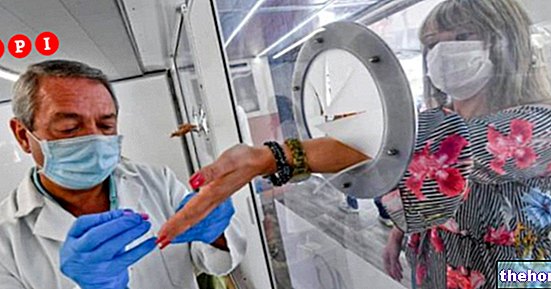
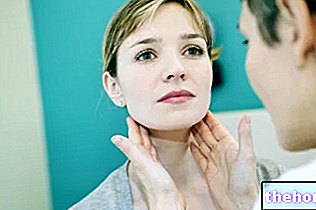
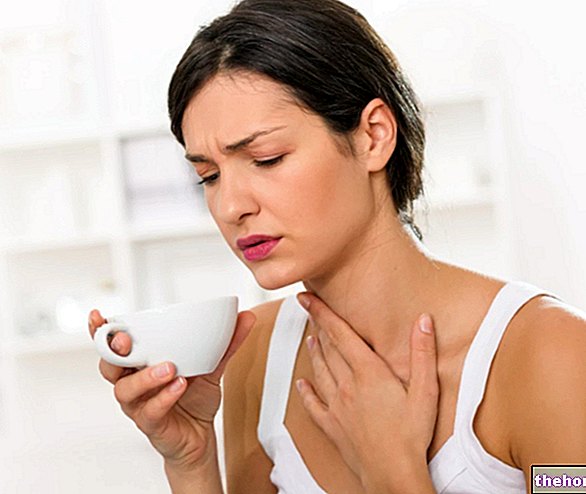
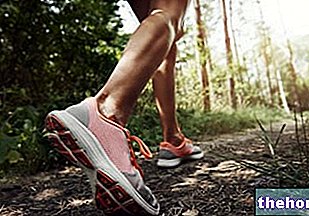
-cos-cause-e-disturbi-associati.jpg)
